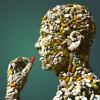I have been making my own liposmal vitamin C and wanted to share a new receipe which adds resveratrol and curcumin to an already potent cancer fighting weapon. This requires an ultrasonic cleaner (I use the iSonic Ultrasonic Cleaner model P4810 ~$90 on Amazon; I like it because it can be run for long periods of time without having to re-start it). Vitamin C (like Curcumin and Resveratrol) is very difficult for the body to absorb when taken orally. This is particularly true when Vitamin C is taken in large oral doses. Until the advent of Liposomal Vitamin C the only efficient method of getting therapeutic levels of Vitamin C into the blood stream was intravenously. This required administration and attendance by a physician or nurse practitioner.
Current studies indicate cancer patients can get more bang for the buck from properly prepared oral Liposomal Vitamin C than is available from the intravenous variety.
Industry is now producing Liposomal carriers for any number of supplements. Two of the more recent and effective are Liposomal Curcumin and Liposomal Resveratrol. Now you can make your own and save money in the process.
***
1. Using a glass or stainless steel sauce pan warm 1 ½ cups of distilled water to 45 degrees Celsius (113 degrees Fahrenheit).
2. In two 12 oz. or larger sealable jars place ½ cup (4 oz.) of the warmed distilled water in each.
3. Add 3 tablespoons of non-GMO soy lecithin (I use the Swansons brand and buy in bulk) to each jar. Seal jars and agitate each vigorously for 3 – 5 minutes. Set jars aside allowing the lecithin granules to soak up distilled water.
4. After soaking for two or more hours shake/agitate each jar vigorously (I use a hand blender) until smooth creamy lecithin solutions in each jar with no visible lecithin granules.
5. Place 10 grams Curcumin (3 1/3 level teaspoons) in one jar of lecithin solution, close jar tightly and agitate/shake aggressively for 3 – 5 minutes until Curcumin is in solution.
6. Place 3 grams Resveratrol (3 level teaspoons) in the 2nd jar of lecithin solution, close jar and agitate/shake aggressively for 3 – 5 minutes until Trans-Resveratrol is in solution.
7. Pour contents of both jars together into ultra-sonic cleaner and turn the unit on. Stir with straw through the first cycle. (Approximately 2 – 3 minutes.)
8. Start next ultrasonic cycle. When ultrasonic unit stops start again. Continue running cycles and stir occasionally while accomplishing the following.
9. Wash your sealable jars. Place two oz. of warm distilled water in each jar.
10. Add 1 Tablespoon prescription Vitamin C powder (I use the Perque brand) to 1st jar, seal and shake/agitate vigorously until Vitamin C is dissolved.
11. Dissolve 1 Heaping Tablespoon of Bob’s Red Mill Bicarbonate of Soda (Bob’s is Aluminum free) in 2nd jar, seal and shake / agitate vigorously until baking soda is dissolved.
12. While stirring the Vitamin C / distilled water solution very slowly pour/dribble the dissolved bicarbonate of soda/water mixture into the Vitamin C / distilled water solution. (Pour soda solution slowly as the resulting mixture will bubble. By pouring slowing and constantly stirring Vitamin C solution you will be able to mix the two without bubbling over.)
13. At the conclusion of mixing the bicarbonate of soda mixture into the Vitamin C mixture bubbling will cease. Pour the resulting total Vitamin C / Bicarbonate of Soda mix together into what was the Bicarbonate of Soda jar and swirl to dissolve any soda that may have settled out.
14. Pour the resulting Vitamin C / Bicarbonate of Soda mixture in ultrasonic unit with the Lecithin, Resveratrol, Curcumin mix.
15. Operate the ultrasonic cleaner for 4 additional cycles or 10 minutes. (I run the cleaner for 30 minutes, 3 runs of 10 min cycles)
16. Measure the pH of the resulting Liposomal combination. You are seeking a pH 7.25 – 7.50. . * Both Vitamin C and Resveratrol are acidic. If needed add very small amounts of addition soda to buffer resulting Liposomal to neutral.
***
I pour the finished product into a glass Patron Silver Tequila bottle and top with a cork and keep refrigerated
Each Tablespoon of this Liposomal Combination results in:
500 mg Vitamin C. Assuming 10 x efficacy the equivalent of 5 grams oral.
415 mg Curcumin. Assuming 10 x efficacy the equivalent of 4 grams oral.
125 mg Resveratrol. Assuming 20 x efficacy the equivalent of 2 1/2 grams oral.
All ingredients are noted for apoptosis (cancer killing) so approach the use with significant caution and common sense. Large doses could cause a severe herxhiemer reaction overwhelming your body’s ability to remove the resulting cancer die off.
The combination is more effective if blood levels are kept near constant. So dividing doses over time is a valid strategy.
Edited by JChief, 16 November 2013 - 09:52 PM.

























































